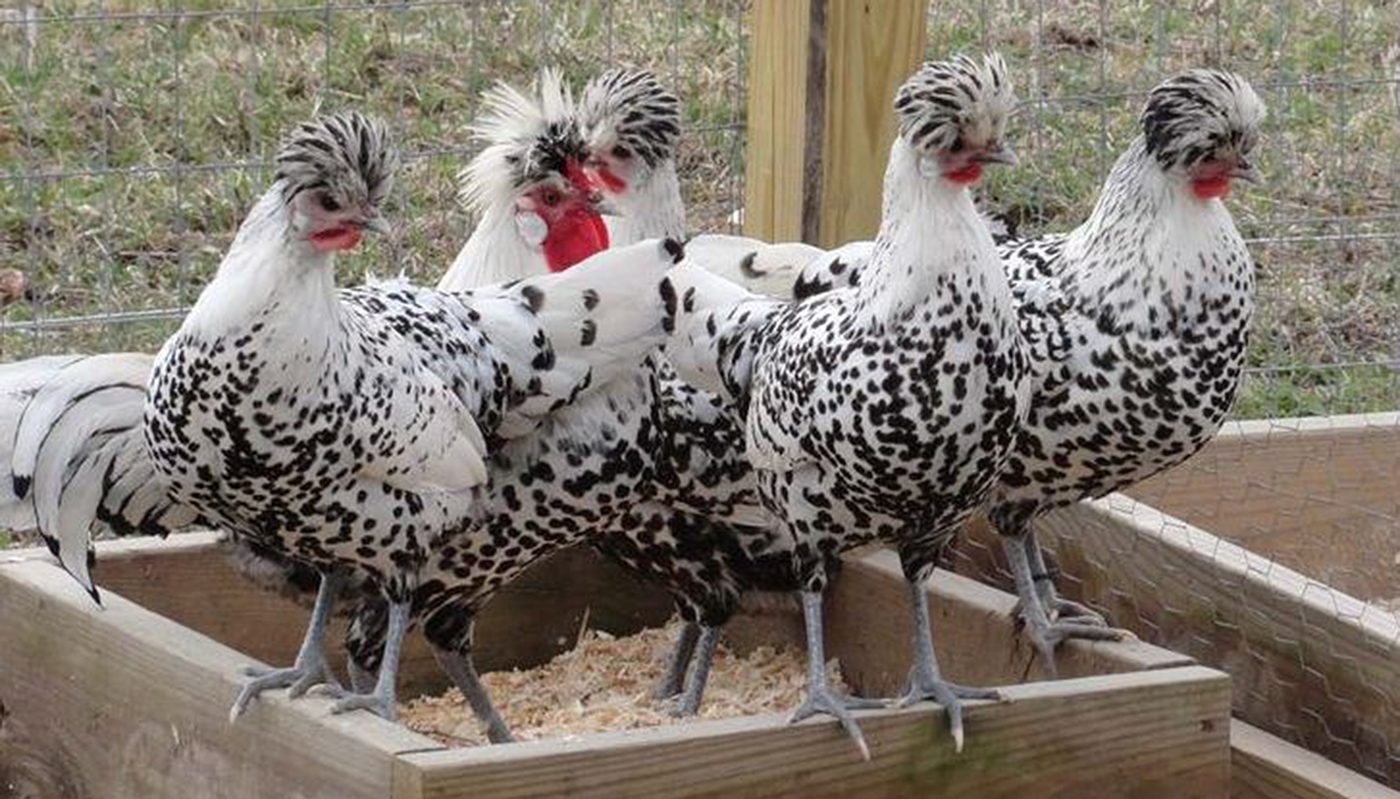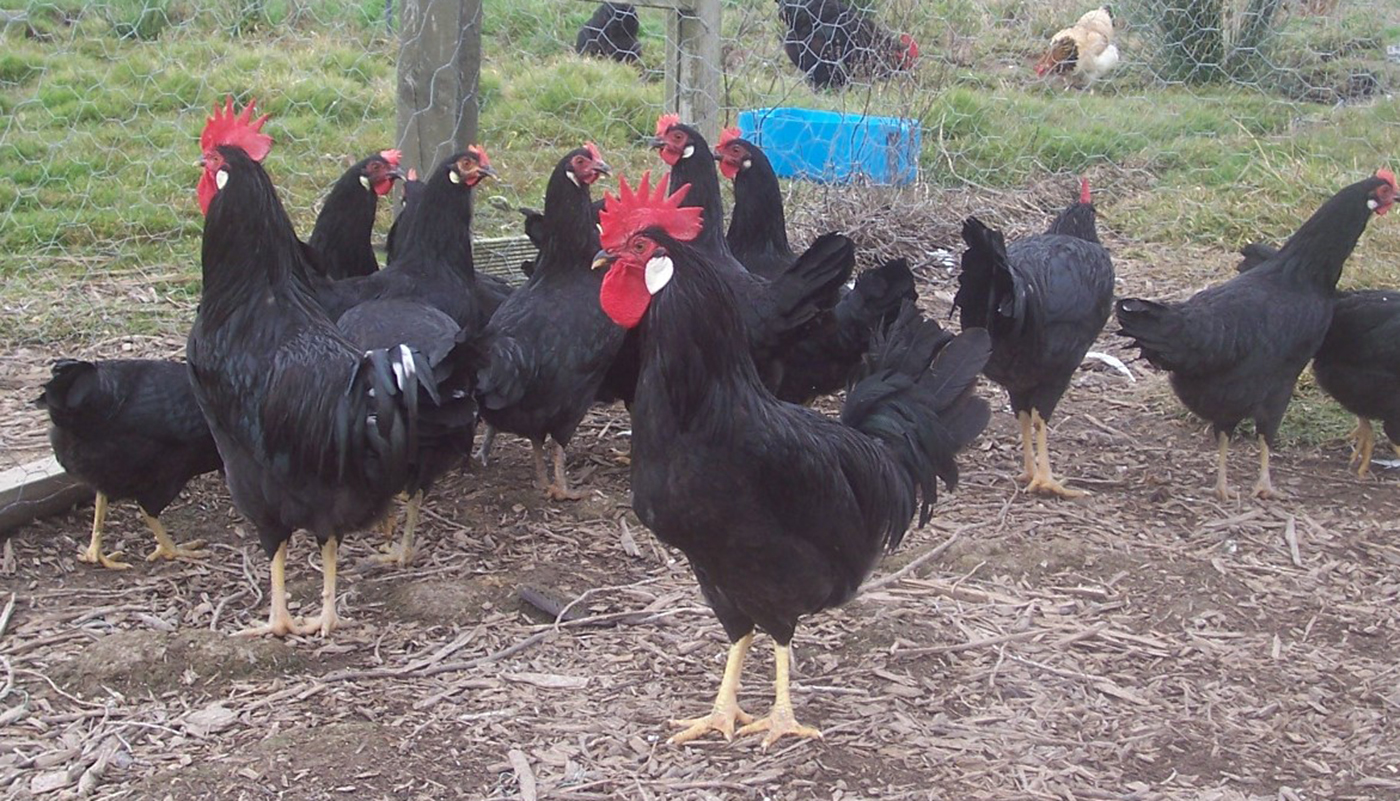
The Legbar/Cream Legbar is a fairly new breed to America and as such has yet to be accepted into the Standard of Perfection by the American Poultry Association.
They are, however, if chickens were trending this is the breed that would currently be at the top of the list in America at the moment. They are very sought after at the moment as these attractive girls are not only a delight to look at and keep as pets but are prolific layers of blue eggs. Another attractive quality of this remarkable chicken is that they are quite easy to breed and are auto-sexing.
This makes them an really good choice for anyone looking to start a small breeding program or breeding chickens for the first time.
| Country of Origin: | United Kingdom |
| American Poultry Association: | No – They are not recognized as a breed of chicken in the United States They are recognized by the Poultry Club of Great Britain The Gold Legbar was standardized in by the PCGB in 1945, the Silver Legbar in 1951 and the Cream Legbar in 1958 |
| Chicken Category: | Light Breed |
| Chicken Class: | Rare Soft Feather |
| Bantam Variety Available? | No |
| Good Starter Chicken? | Yes, they do make a good starter chicken. They are hard to find and hatcheries that do offer Legbars in the USA are usually booked up months in advance. |
IDENTIFICATION⇒ |
Appearance/Body: Legbars are similar in stature and looks to the Leghorn but are a lot spritelier. They have an unusual crest that looks as if it is pinned behind its single comb as if it has a little beret on its head.
There are different color variants that differ mildly in appearance but mostly that are full breasted, with the males being quite muscular and have clean legs.
Color(s) Gold, Silver, Cream and a new color that is not yet standardized called Frost White
Comb: They have a single comb
Ave. Weight: Pullet: 4.5 lbs. Hens: 6 lbs. Cockerel: 5.5 lbs. Rooster: 7 lbs. |
PURPOSE⇒ |
Eggs: They are very good egg layers.
They lay medium light blue/sky blue eggs They lay 180 – 200 eggs per year They will lay throughout the year They start to lay eggs from around 24 weeks old.
Meat: They have yellow skin
They are not very good table birds
Breeding: They are easy to breed and are auto-sexing, but good breeding stock is rare and hard to come by
The hens get broody They make good brood hens They will sit on their eggs They will raise their chicks They make very good mothers
Show Bird: They are not yet recognized as a breed by the American Poultry Association so are not yet recommended as a show bird
Pets: They make excellent pets with their quirky, upbeat, inquisitive nature. They are also really friendly, intelligent and easy to handle
Other: These unique chickens will make a great addition to any flock should you be lucky enough to find them for sale
|
CHARACTERISTICS |
|
|---|---|
| Life Expectancy: | The average lifespan is 6 years |
| Health: | They are very tolerant of both heat and cold making them a very hardy breed with not many known health issues |
| Temperament: | Lively, active, inquisitive and friendly chickens that are easily handled |
| Flyers? | They can fly but are not very flighty |
| Noisy Birds? | They do like to cluck as they free-range and forage about the garden |
| Interaction with other chickens: | They get along well with other chickens and or breeds. They do not show aggression to other chickens |
| Good with kids? | They are good chicken for supervised children. |
| Socialize Behavior? | They do not mind mingling with other domestic animals and as they are extremely alert birds are quite adept at dodging predators or impending danger |
| Known predators: | Always keep an eye on domestic pets such as dogs and cats. If hawks and or foxes are in your area it is always best to take precautions. Check with local animal shelters, zoos, vets, animal control and or pet stores about common predators in your area. |
| Conservation Status: | These birds conservation status is not recorded but they are a new and rare breed in the USA |
IDEAL ENVIRONMENT |
|
|---|---|
| Garden Size: | They will tolerate confinement, but these active chickens prefer not to have to. Preferring instead to be free-range as they are excellent foragers that enjoy eating their fresh caught bounty. |
| Ideal Climate: | They withstand most climate well being both cold and heat hardy. Even though they may be able to withstand any temperature it is always best to take adequate precautions during extreme weather conditions. |
| Ideal Coop: | The rule of thumb for any coop is 50 cm x 50 cm per hen/rooster in the coop. Ensure there is a good space for the nesting boxes and nightly roosting rails at least 1.5 inches wide. Good ventilation for air but not too drafty especially in winter. It is always a good idea to raise the coop off the ground to give the birds a dry place to roost and lay especially in wet weather. |
| Ideal Coop Run: | They are not very flighty birds but can fly so it is advisable to completely cover the coop run. This will give you peace of mind that your chickens are protected from predators above and on ground. Whilst offering your flock security and a safe environment to wander around in the fresh air |
| Ideal Flock Size: | Most chickens are very sociable, and it is always advisable to have at least three chickens in your flock. |
| Special Instructions: | They do not have any special instructions |
| Accessories: | The following accessories are ideal for your coop: Nesting boxes Straw for the boxes and roosting area Roosting rails Perches Water troughs/bowls Food bowls/feeders Heating lamp(s) Animal carrier for transport purposes |
| You may Also Like: | 45 FREE DIY CHICKEN COOP PLANS, TUTORIALS AND DESIGNS |
WHERE TO BUY THEM |
|
|---|---|
| Live Poultry Outlets: | Being a fairly new and rare breed you may not find Legbars at any live poultry outlets. If you do, make sure you have the birds checked out. |
| Internet Poultry Websites: | There are a few internet sites that will offer the Legbar such as My Pet Chicken. Always check reviews about an internet site before placing an order. You may even check on the site/outlets legitimacy from various poultry clubs, poultry organization and societies. You may want to check out Greenfire Farms as they were one of the first poultry farms to start importing Legbar chickens to America. |
| Organizations: | American Poultry Association may be able to help with any queries you have on the breed or to check its Standard of Perfection status. American Livestock Conservancy does keep some registered breeders for various breeds. They are sure to know a bit about the breed having to monitor all the chicken breeds in the USA |
| Breeders Clubs: | There is also the Cream Legbar Club that is sure to have a whole host of information and a list of registered breeders. |
| Other: | The organizations and or breeders listed above may also have a host of valuable information about your chickens. They will also be able to provide you with any special instructions, problems, etc. about your chickens. |
HISTORY
The Legbar is a fairly new breed to America having first been imported by Greenfire Farms in 2010.
It has yet to be accepted by the American Poultry Association and admitted to the Standard of Perfection.
Created in 1929 by Professor Punnet and M. Pease as the second autosexing chicken after the Cambar.
The Legbar was created at the Genetic Institute at Cambridge University in Cambridge in the United Kingdom.
The breed came about by cross-breeding Leghorns, Barred Plymouth Rock and Cambars (the Cream Leghorns have Araucanas in their genetics).
The goal was to create a breed of chicken that was autosexing with the male and female chicks having easy to differentiate differences.
In order to achieve a chicken that was easy to breed and a prolific egg layer, Pease and Punnet’s breeding program included breeds that were known for the excellent egg production.
The cream Legbar differs in appearance to its Silver and Gold counterparts with a crest and the color of its eggs.
The cream Legbar, due to the color of its eggs, nearly became extinct in the 1970’s when there was not much call for blue eggs.
They are still very rare and difficult to obtain.
NOTES / SPECIAL INSTRUCTIONS
They are not registered with any conservation status but are rare and they may need an extra license to own or keep in your garden. For advice on what the bird’s conservation status and orders are please check with your local conservation department.
For breeders, it is imperative that you always check your bird’s bloodlines and ensure you are buying your birds from a reputed breeder/farm. In order to sell birds of such stature, they have to be recorded and documented, always check with local animal breeding organizations for these records.
These legitimate documents are also required should you wish to show your bird(s) in various poultry shows/competition showings.
For information and advice on adopting rescued animals, you can visit or contact your local animal welfare center.
Video
USEFUL LINKS
- Caring for your Chicken
- Feeding
- Health
- Socializing your Chicken
- Breeding Chicken
- Raising Chickens A-Z
- Hatching Eggs
- What is Molting
- Animal Shelter (ASPCA)
- American Veterinary Medical Association
- American Poultry Association
- American Animal Welfare Society
- American Animal Control
- American Animal Husbandry Society
References
- https://en.wikipedia.org
- https://livestockconservancy.org
- https://www.roysfarm.com
- https://www.mypetchicken.com
- https://www.backyardchickens.com
- https://www.feathersite.com/
 Frizzle Chicken Breed – Everything You Need to Know
Frizzle Chicken Breed – Everything You Need to Know Sumatra Chicken Breed – Everything You Need to Know
Sumatra Chicken Breed – Everything You Need to Know Holland Chicken Breed – Everything You Need to Know
Holland Chicken Breed – Everything You Need to Know Polish Chicken Breed – Everything You Need to Know
Polish Chicken Breed – Everything You Need to Know Appenzeller Chicken Breed – Everything You Need to Know
Appenzeller Chicken Breed – Everything You Need to Know Rosecomb Chicken Breed – Everything You Need to Know
Rosecomb Chicken Breed – Everything You Need to Know Java Chicken Breed – Everything You Need to Know
Java Chicken Breed – Everything You Need to Know The Top 10 Chicken Breeds that Lay White Eggs
The Top 10 Chicken Breeds that Lay White Eggs Minorca Chicken Breed – Everything You Need to Know
Minorca Chicken Breed – Everything You Need to Know Cochin Chicken Breed – Everything You Need to Know
Cochin Chicken Breed – Everything You Need to Know 10 Chicken Breeds for the Colder Climates
10 Chicken Breeds for the Colder Climates